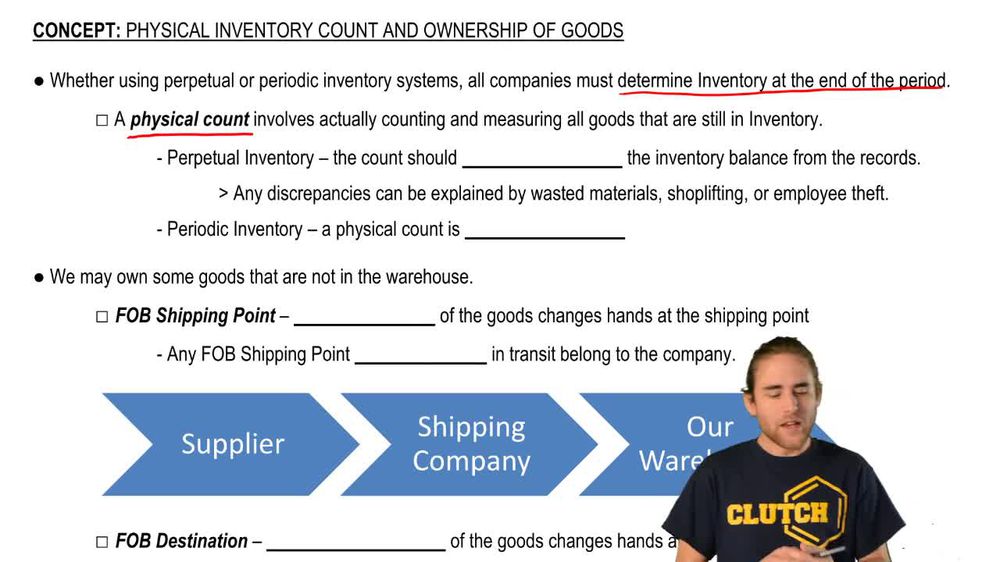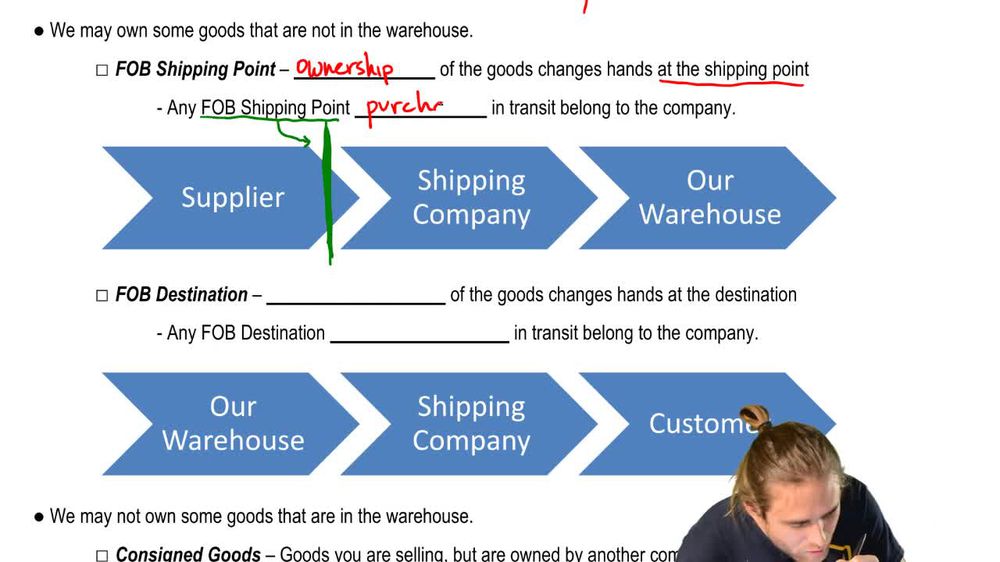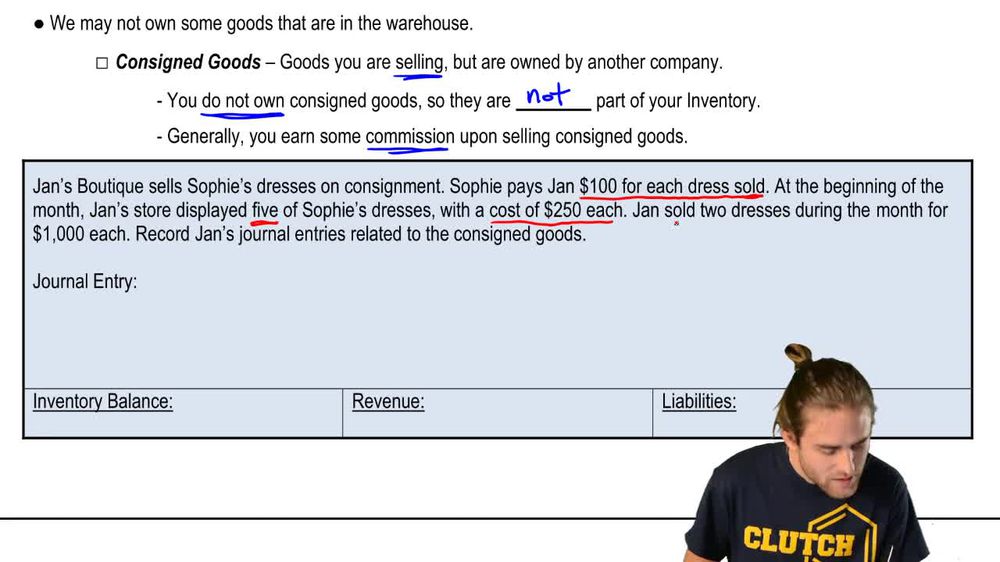Physical Inventory Count, Ownership of Goods, and Consigned Goods definitions Flashcards
Physical Inventory Count, Ownership of Goods, and Consigned Goods definitions
You can tap to flip the card.
Control buttons has been changed to "navigation" mode.
1/15
Physical Inventory CountProcess of manually verifying inventory quantities at period end to ensure accuracy of recorded balances.Perpetual SystemInventory tracking method with continuous updates for each purchase and sale, reflecting real-time balances.Periodic SystemInventory method updating balances only at period end, requiring a physical count to determine ending inventory.FOB Shipping PointShipping term where ownership transfers to buyer when goods leave the seller's location, including in-transit items in buyer's inventory.FOB DestinationShipping term where ownership transfers to buyer upon delivery, keeping in-transit goods in seller's inventory until arrival.Ownership of GoodsLegal right to include items in inventory, determined by shipping terms and consignment arrangements.Goods in TransitItems being shipped between locations, whose inventory inclusion depends on FOB terms.Consigned GoodsItems held and sold by a party on behalf of the owner, excluded from the holder's inventory.ConsignorParty retaining ownership of goods placed with another for sale, recording inventory on their own books.ConsigneeParty selling goods for another, earning commission but not including items in their inventory.Commission RevenueEarnings received by a seller for facilitating sales of goods owned by another party.Liability to ConsignorObligation to remit proceeds from consigned goods sales, minus commission, to the owner.Inventory BalanceAmount reported on the balance sheet representing goods owned and available for sale at period end.Journal EntryAccounting record documenting transactions, such as cash received, revenue earned, and liabilities incurred.Balance SheetFinancial statement listing assets, liabilities, and equity, including inventory owned at period end.


